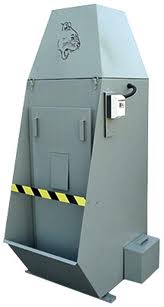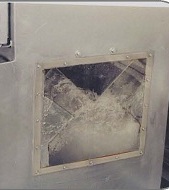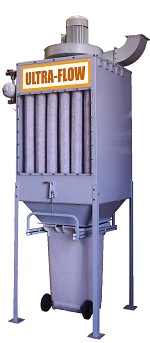Combustible Dusts; Aluminum, Magnesium, Niobium, Tantalum, Titanium, Zirconium
These combustible dusts are highly combustible and present a very significant explosion hazard. There are some stringent fire codes dealing with these dusts which draw their regulations, for the most part, from NFPA 484, Standard for Combustible Metals.
Unfortunately, most end-users are not aware of these standards or safe methods of dust collection for these combustible dusts. Worse, the dust collection industry is very negligent in guiding these people with proper and safe applications engineering. This document is an attempt to provide some of this valuable information.
First of all, we strongly encourage readers to obtain a copy of NFPA 484 and comply with it. There are far too many stipulations which go beyond the scope of this document. A copy of excerpts pertaining to each type of dust can be requested from Quality Air Management.
We will analyze the use of different dust collection methods to these combustible dusts:
- Dry Dust Collectors; include baghouse (both mechanical cleaning and pulse-jet self-cleaning), cartridge or pleated filter collectors, disposable media filters, electrostatic precipitators, cyclones.
- Wet Dust Collectors; there are many styles of wet collectors available. The pro’s and con’s of each type is beyond the scope of this document.
- “The use of an additional dry filter medium either downstream or combined with a wet collector shall not be permitted.”
In all cases the blower for drawing the dust-laden air into the collector shall be located on the clean air side of the collector. The dust producing equipment and dust collector must be electrically interlocked. Ducting must be sized for 4500 FPM velocity.
Mixing of Metals is not permitted, unless the entire system is disassembled and thoroughly cleaned prior to and after its use. A placard must indicate, for example, “Aluminum Metal Only – fire or explosion can result with other metals”.
Wet collectors are designed specifically to be used for all these dusts. These collectors are designed for collection of metal dust only, not for powder, smoke or fumes. The use of additional dry filter medium either downstream or combined with a wet collector is not permitted. Contact QAM technical support for a safe method to handle these contaminants which the wet collector cannot handle. The cleaned air can be recycled to the work area if the collector is efficient enough to ensure safety of personnel. A provision for an unimpeded vent, when the machine is shut down, must be provided. Magnesium dust requires a powered positive venting of the sludge tank at all times during shutdown of the collector.
Dry collectors are allowable for combustible dusts such as aluminum, niobium dusts, but are prohibited for all the other dusts. They must be located outside buildings. Filter media must dissipate static electric charge (be aware that grounded conductive media gives a false sense of security). You must avoid accumulation or condensation of water at all costs which could cause a hydrogen gas explosion. Explosion vents must be provided. A good spark arrestor, like the Quenchertm, is needed to prevent collector fires. Recycling of air into the building is prohibited.
Mechanical shaker style dry collectors are highly susceptible to static electricity charges, and explosions.
Baghouse collectors; there are conventional designs, sold by 95% of dust collector suppliers, and new advanced technology designs.
Conventional; Due to the inefficient clean systems, only 10-20% of the filter media ever gets clean. This allows dust to accumulate in the collector beyond what is permissible by NFPA 484.
Advanced technology (i.e. Ultra-Flow); These are designed to clean 100% of the media on a regular basis. The cleaning frequency can be set to maintain a cleanliness that meets NFPA standards.
Electrostatic Precipitators are prohibited because they filter the air by applying an electrostatic charge across the air stream. That is a source of ignition and the dust will accumulate in the unit and coat the collection plates. This is a prescription of a very large and very load BOOM (explosion).
Cyclones; high efficiency models can be used for these combustible dusts but must be located outside the building. Explosion vents are permitted. Recycling of air into the building is prohibited.



